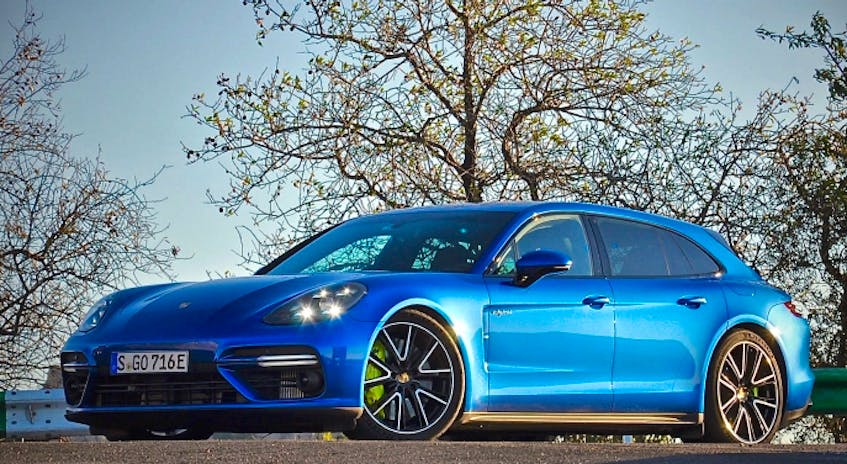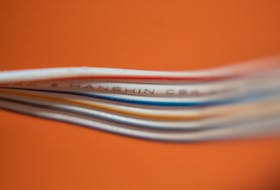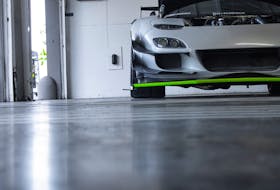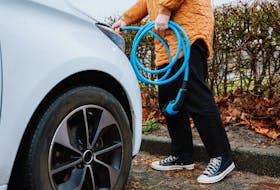David Booth
Driving.ca
As first conceived, hybrids, like electric cars, were designed to be economical runabouts, the idea being that, again like EVs, the lower running costs afforded by electrification would appeal most to the penny-pinchers among us.
Thus we get acceleration-challenged Toyota Priuses and even more anemic Honda Insights. And while the Toyota Prius did indeed capture the imaginations of frugal eco-warriors – and the Leaf kinda sorta became popular with the EV set – hybrids, again like BEVs, have increasingly targeted those who can afford the luxury of electrification.
So, considering how far upmarket the partially electrified marketplace has become, here are the key players in the upper echelons of the hybrid and plug-in hybrid market. And, while most are SUVs, a couple of sedans and coupes also make the grade.
Porsche Panamera E-Hybrid
Porsche has been at this luxury segment electrification thing longer than most other players, save perhaps Lexus, the company’s first shot at hybridization arriving almost a decade ago (2011) and a plug-in version following shortly thereafter in 2013. Even those early versions showed promise.
I drove an early S Hybrid through Italy in 2014 and, when I could keep my autobahn-ing down to 120 km/h — a tough go on Italian highways, I can tell you — it averaged a totally creditable 7.2 L/100. kilometres. Even hustling along at a still-cautious-by-Italian-standards 200 km/h, it averaged 11.2, not bad for a hefty luxury sedan.
Current entry-level Panamera Hybrids will set you back $117,800 – a bargain by Porsche standards – yet still pump out 457 horses. Nonetheless, it’s a frugal thing, the combination of 3.0L turbo V6 and 14 kWh of lithium-ion offering up to 50 kilometres on battery alone.
The Turbo S E-Hybrid, on the other hand, is just a beast, its twin-turbo’ed V8 pumping out an incredible 677 hp, enough to launch the 2,310-kilogram Panamera PHEV to 100 km/h in a very 911-like 3.4 seconds. Like I said, hybrids aren’t just for eco-weenies anymore.
Lexus LC 500h

This will seem sacrilege to many, but Lexus’ LC 500h is the sexiest car in this segment. Hell, it may be the sexiest car on the planet. Even if the big Lexus weren’t an exemplary hybrid, it would deserve mention on this list, so beauteous is its silhouette.
Of course, the Toyota doesn’t build lousy hybrids, quite literally owning the non-BEV electrified market. And although, the 500h is the only non-plug-in chosen for distinction in this category, the LC is nonetheless a showcase for Toyota’s electrified technology. Not satisfied with just one gearbox, for instance, the LC’s 3.5-litre V6 actually has two separate and distinct transmissions (something the company calls Multi-Stage).
The first is a typical-for-a-hybrid CVT – actually a planetary gearset – that’s part of all Toyota Synergy Drive powertrains. But, and this is where it gets complicated, that tranny is hooked up to a four-speed automatic. So, while Lexus claims there are ten “gears” in there, that’s actually a combination of simulated – from the CVT – and real (that would be the four-speed autobox).
The end result is performance and parsimony, the 500h’s 354 horsepower scooting to 100 km/h in about five seconds while sipping just 8.1 L/100 km overall. Now, if Lexus would just slap on some turbochargers on its V6 – like Porsche does – we wouldn’t need the V8-powered version of the LC at all.
Volvo XC90 T8 eAWD

More than a few people will ask why I’ve included the Volvo XC90 T8 plug-in hybrid rather than, say, Porsche’s PHEV Cayenne. After all, like the Panamera mentioned above, both the E-Hybrid and Turbo S E-Hybrid trims of the Cayenne – powered by roughly the same powerplants as their sedan counterparts – are plenty powerful (455 and 670 horsepower, respectively) and it has a little more all-electric range than the Volvo.
But Volvo’s T8 drivetrain makes more sense, at least technically, mating a small 2.0-litre four with two electric motors rather than the V6s and hulking V8s that power the Porsches. What’s especially neat is that the little four-banger is both super- and turbocharged, the turbo adding efficiency while belt-driven forced-induction serves up immediate throttle response.
Combine its 313 horsepower with the 65-kW electric motor and the total is 400 horses, good enough to scoot the electrified XC90 to 100 km/h in 5.6 seconds. That’s not quite as quick as the V6-powered Cayenne E-Hybrid, but it is more sprightly than the gas-only XC90 T6. Volvo recently upped its battery capacity from 10.4 kWh to 11.6 kWh, though that’s still a little shy of the 14 or so kilowatt-hours of lithium-ion typical in this segment. According to the EPA, its electric-only range has increased to 18 miles, or 29 kilometres.
Land Rover Range Rover P400 and P400e Hybrid

Surprisingly, Land Rover Canada is offering two hybrids in its top-of-the-range Range Rover. The first is the base six-cylinder version which, though not officially billed as a hybrid, is electrified. Now it is only mildly hybridized – basically it’s a 48-volt battery-alternator system – but its gas engine is supremely high-tech.
Turbocharged, the P400’s 3.0L inline-six also features an electrically-driven supercharger, for quicker “spool up” times and less fuel-consuming drag on the motor — the entire package is good for 39 hp. An added bonus is that the inline-six is smoother than the outgoing V6, which had its cylinders splayed in an odd 90-degree format.
The star of the Range Rover show, though, is the P400e PHEV. Another big SUV going the electrified four-banger route, the gasoline component of the P400e is, like Volvo’s XC90, also a 2.0-litre four. In Land Rover’s case, however, the little four is only turbocharged. Nonetheless, the gas horsepower and electric kilowatts totals some 398 hp and will scoot the big Range Rover to 100 kilometres an hour in less than seven seconds. That’s a little quicker than the optional V6 turbodiesel, by the way.
And, thanks to a 13.1-kWh battery, Land Rover also claims a hair over 50 kilometres of electric-only range, though that is according to Europe’s notoriously generous testing cycle. In real life, EV range is probably closer to 30 clicks. Nonetheless, it’s pretty darned impressive for such a humongous – and, again, luxurious – sport brute. Four-cylinder Range Rovers? We do indeed live in a new era.
BMW X5 xDrive 45e iPerformance

Another exciting new entry in the plug-in SUV segment is BMW’s 2021 xDrive 45e version of the X5. Unlike previous BMW four-cylinder plug-ins, the 45e now uses a 280-hp version of BMW’s trademark 3.0-litre inline-six married to 111 hp of electric motors for a total “system” output of 389 ponies. Max torque, meanwhile, is a not-inconsequential 443 foot-pounds. That should lop almost a second off the electrified X5’s zero-to-100 km/h time compared with the outgoing four-cylinder hybrid. Its electric-only top speed is also said to be increased to 140 km/h.
According to the European test cycle, the 45e is good for somewhere between 86 and 97 kilometres of electric-only motoring. Now before you go completely ga-ga, the NEDC electric test cycle is notoriously optimistic. Nonetheless, the new X5 PHEV does boast a new 24-kilowatt-hour battery, substantially larger than its immediate competition. Could we see 50 km of EPA-certified EV range? Possibly. We’ll hopefully soon find out, the iPerformance X5 due to be released later this summer — though, like pretty much everything else, the coronavirus trumps all near-term plans.
Lincoln Aviator Grand Touring

Meanwhile, the Grand Touring version of Lincoln’s new Aviator takes a very Porsche-like approach to electrifying its second-largest sport-ute. Marrying a twin-turbocharged 3.0-litre V6 to a 75-kilowatt electric motor, the whole shebang is good for 494 rootin’, tootin’ horsepower and a semi-incredible 630 foot-pounds of torque. Compare that with the 400 hp and 415 lb.-ft. of the same gas engine all by its lonesome and, suddenly, hybridization is the new supercharging.
For the record, the Aviator Grand Touring will, according to Car and Driver, sprint from zero to 96 km/h (60 mph) in five seconds flat — not bad for a truly sizeable SUV, and a full second quicker than the base gas-only Aviator.
It will also, thanks to its 13.6 kWh battery – seemingly the norm in this segment, dontcha think? – claim about 30 kilometres on battery power alone. It’s also worth noting that, as I described in my latest road test of the conventional Aviator, Lincoln interiors can now rival any in the luxury segment. Maybe Ford’s switch to an all-SUV portfolio is a good thing.









